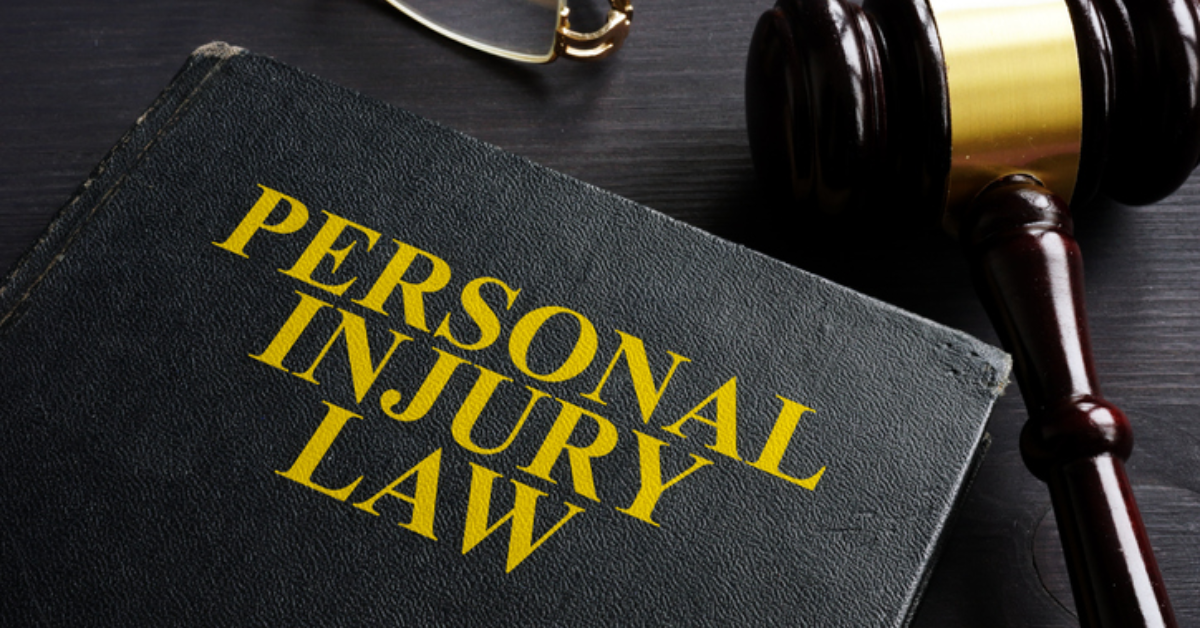Trendspotting: The Future of Personal Injury Law

Personal injury law isn’t set in stone — it’s always growing. New technology, different ways of thinking, and even big world events are shaping how these cases are handled.
So, whether you’re a lawyer or someone who’s been injured, understanding these trends is key to handling the legal landscape. So, what does the future of personal injury law hold?
In this blog post, we’ll look at some of the biggest trends impacting personal injury law today. We’ll cover everything from how tech like artificial intelligence is used in court to the growing focus on mental health after an accident
1. Artificial Intelligence (AI) in Litigation
Artificial intelligence, or AI, isn’t just about robots and science fiction anymore. It’s starting to change the way personal injury cases are handled.
Imagine a computer program that can help lawyers find important information much faster than they could on their own. That’s already happening, thanks to AI tools that can quickly scan through thousands of legal documents adds Scott Distasio, Personal Injury Lawyer at Distasio Law Firm.
AI isn’t just about speeding up research, though. It’s also being used to predict the outcome of a case. By looking at data from past cases, AI can give lawyers a better idea of whether a case is likely to be successful and how much money a person might get. This helps lawyers and their clients make better decisions about how to handle their case.
Even the way claims are processed could be changing. AI tools might soon be used to review medical records and other documents — making the process faster and more efficient for everyone involved.
While AI is still new to the legal world, it’s clear that it’s going to play a bigger and bigger role in personal injury cases in the future. From making research faster to predicting outcomes and speeding up claims, AI has the potential to change the game for everyone involved in an injury case.
2. Social Media on Personal Injury Cases
If you’re involved in an accident, your social media posts might not be so private anymore. Lawyers and insurance companies are increasingly turning to platforms like Facebook, Instagram, and Twitter to gather evidence in personal injury cases.
Your posts, photos, and videos could be used to challenge your claims. For example, if you say you’re severely injured but then post photos of yourself enjoying a day out, that could raise questions about the extent of your injuries. On the flip side, social media can also help your case.
Posts showing your struggles with recovery or the impact of your injuries on your daily life is powerful evidence to support your claims, adds Adam Loewy, Founding Attorney at Loewy Law Firm.
It’s not just about what you post yourself, either. Comments and posts from your friends and family could also be used as evidence. This is why it’s important to be mindful of what you share online and talk to your lawyer about how to protect your social media presence during a legal case.
The rise of social media has also changed the way we think about reputation. In the past, the focus was mainly on physical injuries and financial losses. Now, damage to your reputation can also be considered in a personal injury case. This means that if an accident or injury has negatively impacted your online image or how people perceive you, you will be able to seek compensation for that as well.
3. Telemedicine and Its Impact on Medical Malpractice
The way we see the doctor is changing, and that’s having a ripple effect on personal injury law. Telemedicine, where you have appointments by phone or video chat instead of in person, is becoming more and more common. This is especially true after the pandemic forced many of us to stay home.
Telemedicine has a lot of benefits — it can make healthcare more accessible for people who live far away from doctors — those with limited mobility, or busy folks who struggle to find time for appointments. But it’s also raising some new questions for medical malpractice law.
For example, if you get misdiagnosed over a video call, how does that affect your ability to sue for malpractice? Can you really get a good sense of your health without an in-person exam? And what happens if the technology glitches during your appointment, leading to a missed diagnosis or delayed treatment?
These are the kinds of questions that courts are starting to grapple with. We may see new laws and rules develop specifically for telemedicine to make sure patients are protected, even when they’re not sitting in the doctor’s office.
This could mean stricter guidelines for online appointments, new ways to prove medical negligence, and potentially even changes to how damages are calculated in telemedicine-related lawsuits.
4. Growing Recognition of Psychological Trauma
It’s not just broken bones and bruises that matter in personal injury cases anymore. The law is starting to recognize that accidents can leave deep emotional scars, too. Things like post-traumatic stress disorder (PTSD), anxiety, and depression are serious conditions that can make it hard to work, enjoy life, and even get out of bed in the morning.
In the past, it was often difficult to get compensation for this kind of emotional harm. But things are changing. Courts and juries are starting to understand that these invisible injuries can be just as debilitating as physical ones, adds Scott Odierno, Partner of The Odierno Law Firm.
This means that if you’ve been diagnosed with PTSD, anxiety, or depression after an accident, you might be able to get compensation for those conditions as part of your personal injury claim.
Proving these injuries is, though. It’s not as simple as showing an X-ray of a broken bone. That’s why experts like psychologists and psychiatrists are becoming more important in these cases. They can evaluate your mental state, diagnose your condition, and explain to the court how the accident caused your emotional trauma.
This growing recognition of psychological trauma is a big step forward for personal injury law. It means that people who have suffered emotional harm can now get the recognition and compensation they deserve.
5. Alternative Dispute Resolution (ADR)
Going to court isn’t always the best way to resolve a personal injury case. It is expensive, time-consuming, and stressful. That’s why more and more people are turning to alternative dispute resolution, or ADR.
ADR is a way to settle your case without a trial. It usually involves a neutral third party, like a mediator or arbitrator, who helps both sides reach an agreement.
Basically, Mediation is like a guided conversation, where both sides talk about their concerns and try to find a solution that works for everyone. The mediator doesn’t make any decisions — they just help the conversation along and try to find common ground.
And on the other hand, Arbitration is a bit more formal. It’s like a mini-trial, where both sides present their evidence and arguments to an arbitrator, who then makes a decision. This decision is usually binding, which means both sides have to stick to it.
ADR is a good option for many personal injury cases. It’s often faster and cheaper than going to court, and it gives you more control over the outcome. You can work with the other side to come up with a solution that meets your needs, rather than having a judge or jury decide for you.
6. Cybersecurity and Data Breaches
When hackers strike, it’s not just your computer they’re messing with — it could be your life. We store so much personal information online these days, from our addresses and phone numbers to credit card details and health records. If that information gets stolen or leaked, it can cause a lot more than just a headache.
Lets say, if a hacker gets ahold of your medical records, they could use that information to blackmail you or even discriminate against you. If your financial information is stolen, you could become a victim of identity theft or fraud. These are serious harms, and they’re not just the stuff of movies — they’re happening every day.
Personal injury law is starting to recognize that data breaches can be just as harmful as a car accident or a slip and fall. If a company doesn’t do enough to protect your data and it gets stolen, you might be able to sue them for the harm you suffer, says Michael Hess, Tech Expert at Code Signing Store.
This includes the cost of dealing with identity theft, the emotional distress of having your private information exposed, and even lost wages if you’ve to take time off work to sort things out.
This is a new and growing area of law, but it’s an important one. As we spend more and more of our lives online, it’s crucial that companies are held accountable for protecting our data. After all, your personal information is valuable, and it deserves to be protected.
7. Class Action Lawsuits for Faulty Products
When a product like a car part or a medicine hurts a lot of people, they don’t always have to file individual lawsuits. Instead, they can team up in what’s called a class action lawsuit.
Class action lawsuits are becoming more common in cases where a faulty product has harmed many people in the same way. For example, if a certain type of medicine causes serious side effects in thousands of people, they might join together in a class action lawsuit to hold the drug company accountable.
There are a few reasons why class action lawsuits are on the rise. First, they can be more efficient than having hundreds or even thousands of individual cases clogging up the courts. Second, they give more power to consumers. It’s easier for a group of people to take on a big company than it is for one person acting alone.
But class action lawsuits also have their downsides. They’re complicated and take a long time to resolve. And even if the lawsuit is successful, the amount of money each person gets might be relatively small. But for many people, the chance to hold a company accountable and prevent others from being harmed is worth the effort.
The rise of class action lawsuits is a sign that consumers are becoming more aware of their rights and are willing to take action when those rights are violated. It’s a trend that’s likely to continue as more and more people are affected by faulty products.
8. Early Investigation and Preserving Evidence
When you get hurt in an accident, acting fast to gather evidence is super important. For example, the longer you wait, the more details get lost. Skid marks fade away, people forget what they saw, and even security camera footage can get deleted. The sooner you start gathering evidence, the stronger your case will be.
This means taking pictures and videos of the accident scene right away, getting contact info from witnesses, and saving any medical records related to your injuries. Even your social media posts are evidence, so be careful what you share online after an accident.
Technology is changing the way we gather evidence, too. Drones can take pictures from above, and special cameras can create 3D models of the scene. This helps to show exactly what happened and who might be at fault, says Carl Barkemeyer, Owner of Barkemeyer Law Firm.
But remember, technology can also work against you. Digital evidence, like emails or security footage, can disappear if you don’t save it quickly. That’s why it’s important to talk to a lawyer as soon as possible. They can help you figure out what evidence you need and how to make sure it’s protected.
Final Thoughts
With the times, personal injury law is coming up with new advancements. Every day, new legal issues come up by technology, such as self-driving cars and the information we provide online. In addition to physical harm, emotional discomfort and breaches of privacy on the internet are becoming more common.
So, if you get into an accident, it’s important that you stay up to date on these developments. Because by staying up-to-date, you can leave a positive impact on your case.
And always remember, the law is there to protect you, but it’s up to you to understand how it works.







4 Comments